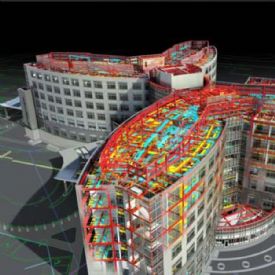 Flyt för Aras PLM: - De senaste årens vinnare när det gäller nya användare
Flyt för Aras PLM: - De senaste årens vinnare när det gäller nya användare
 Flyt för Aras PLM: - De senaste årens vinnare när det gäller nya användare
Flyt för Aras PLM: - De senaste årens vinnare när det gäller nya användare
 ”Great ERP, worse PLM” – What SAP PLM needs to sharpen its competitive edge
”Great ERP, worse PLM” – What SAP PLM needs to sharpen its competitive edge
 PLM Spending: A period of “Digestion” after two years of explosive growth
PLM Spending: A period of “Digestion” after two years of explosive growth
 The Market for PLM Services: Why Accenture thinks they can rattle IBM
The Market for PLM Services: Why Accenture thinks they can rattle IBM
 TV-report: The Internet of Things – The secret to what PLM and ERP can do in the smart revolution
TV-report: The Internet of Things – The secret to what PLM and ERP can do in the smart revolution
 Not ”a load of crap” anymore: ”PLM 360 is way ahead of plan”, says Autodesk’s Carl Bass
Not ”a load of crap” anymore: ”PLM 360 is way ahead of plan”, says Autodesk’s Carl Bass
 "Demolish the silos in PLM": Why Dassaults Bernard Charles believes in the 3D Experience
"Demolish the silos in PLM": Why Dassaults Bernard Charles believes in the 3D Experience
 The Next Big Boom in PLM and ERP and the Battle Over mBOM Ownership
The Next Big Boom in PLM and ERP and the Battle Over mBOM Ownership
 From the graveyard of ERP to the world’s largest start-up: Infor TV Report
From the graveyard of ERP to the world’s largest start-up: Infor TV Report
 What Happened to Volvo engineering and PLM under Chinese ownership?
What Happened to Volvo engineering and PLM under Chinese ownership?
 Will GE and PTC’s joint venture create a ”PLM and manufacturing advantage”?
Will GE and PTC’s joint venture create a ”PLM and manufacturing advantage”?
 Inside Daimler Mercedes Switch from Dassault Systèmes to Siemens PLM and NX
Inside Daimler Mercedes Switch from Dassault Systèmes to Siemens PLM and NX
 Truck Maker’s PLM Model a Focus in Volkswagen’s War Over Ownership
Truck Maker’s PLM Model a Focus in Volkswagen’s War Over Ownership
 The Role of 3D Printing in Manufacturing and PLM – TV Report
The Role of 3D Printing in Manufacturing and PLM – TV Report
 The Third Platform – A Quantum Leap for PLM and ERP
The Third Platform – A Quantum Leap for PLM and ERP
 SolidWorks Mechanical Conceptual: Late and Great, but too Expensive? – TV Report
SolidWorks Mechanical Conceptual: Late and Great, but too Expensive? – TV Report
 Big Data – Big Problem? – TV Report
Big Data – Big Problem? – TV Report
 Applauds to the European Parliament’s call to modernise EU public works projects with BIM technology
Applauds to the European Parliament’s call to modernise EU public works projects with BIM technology
 Siemens, Tesis PLMware and Industry 4.0
Siemens, Tesis PLMware and Industry 4.0
 Why PTC acquired ThingWorx and how M2M will change everything
Why PTC acquired ThingWorx and how M2M will change everything
 Autodesk’s CEO, Carl Bass: We want to change the way people work – TV Report
Autodesk’s CEO, Carl Bass: We want to change the way people work – TV Report
 How MOBILITY transforms Product Development, Manufacturing and Service – TV Report
How MOBILITY transforms Product Development, Manufacturing and Service – TV Report
 Can PLM Systems Manage Highly Complex Products? – TV Report
Can PLM Systems Manage Highly Complex Products? – TV Report
 Dassault’s 3DEXPERIENCE Platform – TV Report
Dassault’s 3DEXPERIENCE Platform – TV Report
 PLM Systems Cleared for Take Off at Airbus
PLM Systems Cleared for Take Off at Airbus
 FRONTRUNNERS Takes a Look Inside Volvo’s Construction Equipment
FRONTRUNNERS Takes a Look Inside Volvo’s Construction Equipment
 Battle of the Visions part 3: PTC breaks new ground in the PLM landscape - claims CEO Jim Heppelmann
Battle of the Visions part 3: PTC breaks new ground in the PLM landscape - claims CEO Jim Heppelmann
 User experience the deciding factor when Dutch shipbuilder, Damen, chose IFS
User experience the deciding factor when Dutch shipbuilder, Damen, chose IFS
 PTC’s Windchill 10.0 – will 100 million in R&D take PLM to the next level?
PTC’s Windchill 10.0 – will 100 million in R&D take PLM to the next level?
 The French Connection ...more possibilities than problems, when SolidWorks is “dassaultified”?
The French Connection ...more possibilities than problems, when SolidWorks is “dassaultified”?
 Management swap at SolidWorks - Jeff Ray Steps down as CEO, Bertrand Sicot takes over
Management swap at SolidWorks - Jeff Ray Steps down as CEO, Bertrand Sicot takes over
 SolidWorks’ Jeff Ray confirms in an interview transition to Dassault’s V6 platform
SolidWorks’ Jeff Ray confirms in an interview transition to Dassault’s V6 platform
 17/01/2014
CAD
17/01/2014
CAD
 VERKSTADSFORUM.SE:S TELEGRAMREDAKTION
VERKSTADSFORUM.SE:S TELEGRAMREDAKTION
Applauds to the European Parliament’s call to modernise EU public works projects with BIM technology

Bildtext:
Leaders from Europe’s architecture, engineering and construction industry expressed their support today of the European Parliament’s decision to modernize European public procurement rules by recommending the use of electronic tools such as building information electronic modelling, or BIM, for public works contracts and design contests.
BIM enables project teams of architects, engineers, building and infrastructure owners and construction firms to use 3D digital models to collaborate and support building projects throughout their lifecycle - from design and documentation to building and field support. Unlike with traditional 2D drawings, the data in a BIM-led project remains consistent, coordinated, and more accurate across all stakeholders, regardless of how many times the design changes, or who changes it. As a result, building and infrastructure projects are created and completed faster, more economically and sustainably.
The adoption of the directive, officially called the European Union Public Procurement Directive (EUPPD) means that all the 28 European Member States may encourage, specify or mandate the use of BIM for publicly funded construction and building projects in the European Union by 2016. The UK, Netherlands, Denmark, Finland and Norway already require the use of BIM for publicly funded building projects.
Key benefits of adopting BIM for public procurement projects include:
Cost Savings for Taxpayers: Public procurement plays an important role in the overall economic performance of the EU, where public purchasers spend approximately 18% of GDP on supplies, works and services. According to a 2012 report issued by the European Commission, public entities that have already implemented e-procurement solutions report savings of between 5% and 20% of their procurement expenditure. The total size of the EUs procurement market is estimated to be more than 2 trillion Euro, so each 5% saved could result in about 100 billion Euro of savings per year – the equivalent to building more than 150 large-size hospitals.
The UK government estimates that it saved £1.7 billion (2 billion Euro) on major public building projects since 2012 and that 66 per cent of the the UK’s Major Project Authority portfolio is now being delivered on time and within budget, a substantial improvement on the 33 per cent seen in 2010. (Source: Construction News).
Economic Boost to the Construction Sector: The European construction sector generates almost 10% of the region’s GDP and provides 20 million jobs, mainly in micro and small enterprises. Construction is also a major consumer of intermediate products, such as raw materials, chemicals, electrical and electronic equipment, and related services. Because of its economic importance, the performance of the construction sector can significantly influence the development of the overall European economy.
Higher Impact for Sustainable Design: In addition to the economic benefits observed by introducing technology to construction, existing buildings contribute approximately 40% to greenhouse gases and to energy use by a similar proportion. Tackling the energy performance of existing buildings also falls within the scope of the PPD.
Representatives from various European membership organisations and Companies, as well as Autodesk are available for interviews about today’s vote and its implications for the Member States’ taxpayers, public sector and AEC industry.
Key Quotes:
Luc BOURDEAU Secretary General ECTP, “ECTP applauds the EU Directive for encouraging innovation and good practice in the European construction sector and for its recognition to consider ‘whole-life’ costs in relation to public works tenders and design contests. The construction sector has a significant opportunity to improve its performance through the use of innovation and technology: this Directive signals that public procurers can take a positive leadership role for the EU construction sector and it highlights the opportunity to use BIM. ECTP has been supporting the growing use of BIM and monitoring its specification for public works in Member States.”
Olle Samuelson, Managing Director, BIM Alliance Sweden: “The directive is an important step in the right direction to increase the use, and awareness, of the BIM process. The implementation of the new directive will hopefully also put more pressure on standardization, which is one of the most important issues for BIM Alliance Sweden for the coming years”
Roland Zelles, vice president of Europe, Middle East and Africa at Autodesk, a leader in 3D design software: “For the first time, the EU is asking their member states to consider the use of technology to modernise and improve the public procurement processes. Today’s vote represents a big step forward for the EU and its member states. The wide adoption of BIM across the European AEC industry would not only reduce the cost of publicly funded building projects at home, but also tremendously boost EU industry’s global competitiveness in winning international building contracts.”


















